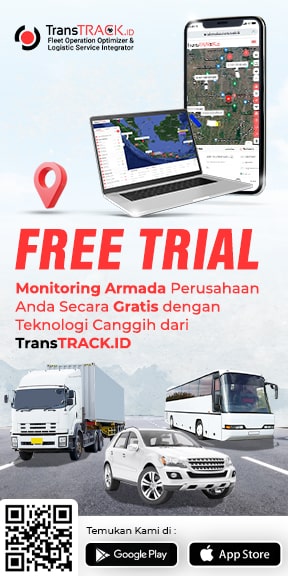Mining Optimization for Every Mining Type in Indonesia
Posted on September 20, 2023 by Nur Wachda Mihmidati

Indonesia has various mining type which are the backbone of supporting vital industries, including manufacturing, construction and energy. From metal ores to fossil fuels, each type of mining has its own role and characteristics in the Indonesian economy.
In this TransTRACK article, we will explore the various mining type that exist in Indonesia, reveal the complexity of the industry, and outline the impacts and challenges involved. From ore mining which involves the extraction of precious metals to energy mining which supplies vital resources, and industrial minerals which support construction and manufacturing, let’s take a deeper dive into the world of Indonesian mining.
What are the mining type in Indonesia?
In Indonesia, there are several different mining type, including ore mining, energy mining, and industrial mineral mining. The following is a brief explanation and mining results of each type:
Ore Mining
- Nickel: Indonesia is one of the largest nickel producers in the world, with many nickel mines mainly located in Sulawesi, Halmahera, and Papua. Nickel is used in stainless steel manufacturing, batteries, and the chemical industry.
- Bauxite: Bauxite mines are found in West Kalimantan, Riau and the Riau Islands. Bauxite is an important raw material for making aluminum, which is used in the automotive, construction and packaging industries.
- Gold: Gold is extracted from a number of mines in Indonesia, such as the Grasberg mine in Papua. Gold is used as an investment, in jewelry, and in the electronics industry.
- Copper: The Grasberg Mine is also a major source of copper in Indonesia. Copper is used in electrical wiring, piping, and many electronic applications.
- Tin: Bangka-Belitung is one of the largest tin producing areas in the world. Tin is used in the production of metal alloys, such as alloy steel, as well as in the manufacture of solder.
- Iron: Iron ore is extracted from areas such as Kalimantan and Sumatra. It is the main raw material for steel production, which is used in various industries.
Energy Mining
- Petroleum: Indonesia is the largest petroleum producer in Southeast Asia. Petroleum is used to produce gasoline, diesel and chemicals such as plastics.
- Natural Gas: Natural gas is also a major energy source in Indonesia, used for electricity generation, industry, and as a household fuel.
- Coal: Indonesia has one of the largest coal reserves in the world. Although controversial due to its environmental impact and greenhouse gas emissions, coal remains the main energy source in the country.
- Geothermal: Indonesia has significant geothermal potential, and geothermal power plants are used to produce clean and sustainable electrical energy.
Industrial Minerals
- Silica Sand: Silica sand is an important raw material in the glass, cement and concrete manufacturing industries. Central Java and East Java are the main producers of silica sand in Indonesia.
- Kaolin: Kaolin is used in making ceramics, paints, paper, and refractory products. The Bangka-Belitung area is one of the largest kaolin producers in Indonesia.
- Chalk: Limestone or chalk is used in the cement industry to produce Portland cement. Lime mines can be found in Java, Sumatra and Kalimantan.
- Limestone: Limestone is also used in the cement industry, and Indonesia has sizable limestone reserves in various locations.
- Granite and Marble: Granite and marble are building materials used for floors, walls, and interior decoration. The Central Java and Sumatra regions are known as producers of granite and marble.
- Sand and Gravel: Sand and gravel are used in the construction of roads, buildings, and other infrastructure projects. Sand and gravel reserves can be found in many areas throughout Indonesia.
It is important to remember that mining has a significant economic impact in Indonesia, but it also brings environmental challenges such as deforestation, water pollution, and conflict with indigenous communities. Therefore, sustainable management and environmental protection measures are essential in managing the mining sector in the country.
TransTRACK Solutions in Mining
TransTRACK is a solution used in the mining industry to improve efficiency, safety and vehicle fleet management. This solution integrates several technologies that can provide significant benefits in mining operations. The following is an explanation of how various TransTRACK components, such as ADAS (Advanced Driver Assistance System), DMS (Driver Monitoring System), Fuel Monitoring, Speed Buzzer, and Speed Limiter, can provide holistic solutions in the mining industry:
ADAS (Advanced Driver Assistance System)
- ADAS is a system designed to help drivers identify and avoid potential hazards on the road.
- In the mining context, ADAS can help reduce the risk of accidents by providing automatic warnings or interventions when danger is detected, such as a collision with another vehicle or moving object.
- ADAS solutions can improve driver and vehicle safety on mining sites that often have extreme road conditions.
DMS (Driver Monitoring System)
- DMS is a system used to monitor driver activity and behavior.
- In the mining industry, DMS can help ensure that drivers remain alert and do not experience fatigue or distraction while driving.
- The DMS system can detect signs of driver fatigue or inattention and provide warnings or suggestions so that the driver can rest or refocus.
Fuel Monitoring
- Fuel monitoring is a key element in managing vehicle fleets in mining.
- With a fuel monitoring system, companies can track the fuel usage of each vehicle in real-time.
- This helps in identifying patterns of fuel wastage, leaks or unauthorized refueling.
Speed Buzzer
- A speed buzzer is a device that provides an audible warning when a vehicle exceeds the specified speed limit.
- In mining, this helps ensure that vehicles operate within safe speed limits.
- Drivers will hear a warning if they exceed a preset speed.
Speed Limiter
- A speed limiter is a device that limits the maximum speed of a vehicle.
- In the mining industry, these can be programmed to ensure that vehicles cannot exceed predetermined speed limits.
- This helps in maintaining safety at mining sites and avoiding accidents caused by excessive speed.
The combination of all these components in the TransTRACK solution can result in more efficient fleet management, improve driver safety and reduce operational costs in the mining industry. Additionally, this solution can also provide valuable data for better analysis and planning in mining operations.
In the dynamic and often high-risk world of mining, TransTRACK presents a comprehensive and innovative solution to optimize your mining operations. By combining advanced technologies such as ADAS, DMS, Fuel Monitoring, Speed Buzzer, and Speed Limiter, TransTRACK brings positive changes that can be felt in various aspects.
With TransTRACK, you can improve driver safety, reduce the risk of accidents, manage your fleet more efficiently and control operational costs. It’s not just about improving operational efficiency, but also about maintaining environmental integrity and respecting safety standards.
So, don’t let your mining operations fall behind. Join TransTRACK and witness significant positive changes in productivity and sustainability. With TransTRACK, you are on the path to a better future in the mining industry.
Do not miss this opportunity. Discover how TransTRACK can advance your mining operations today and take your business to the next level. Contact us now to get a demo and a solution that suits your needs. Together, we can achieve greater results.
Topic :
 Bahasa Indonesia
Bahasa Indonesia








